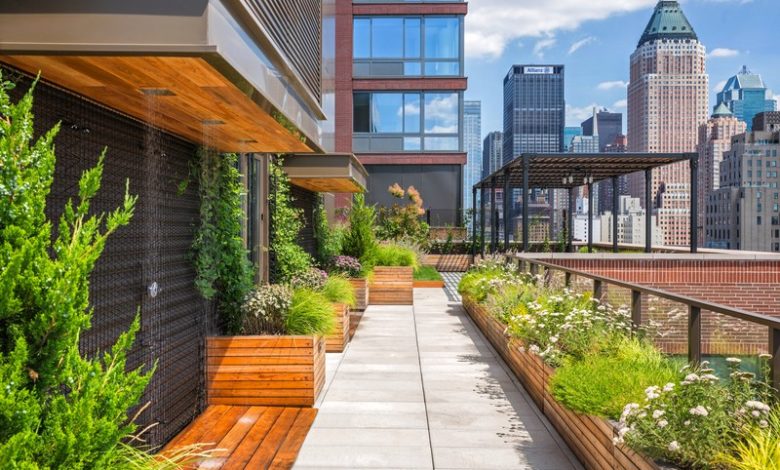Creative Approaches to Elevate Urban Green Rooftop Gardens

Rooftop gardens are a fantastic way to utilize urban spaces and create vibrant, eco-friendly environments. These elevated gardens not only beautify the skyline but also provide numerous benefits such as improved air quality, reduced energy consumption, and increased biodiversity. Find some innovative ways from the best site to handle rooftop gardens, offering creative approaches to maximize their potential and create urban oases.
Vertical Gardening
Vertical gardening is an innovative technique that optimizes space utilization in rooftop gardens. By using vertical structures like trellises, living walls, or hanging planters, you can grow a variety of plants, even in limited areas. This approach adds texture and visual interest to the rooftop garden while maximizing the number of plants you can cultivate. Vertical gardening also helps to insulate the building and reduce the heat island effect.
Integrate Edible Landscaping
Incorporating edible landscaping into rooftop gardens not only enhances their aesthetic appeal but also provides a source of fresh, organic produce. Planting vegetables, herbs, and fruit-bearing plants can transform the rooftop garden into a functional and sustainable food source. Consider using containers, raised beds, or hydroponic systems to grow an assortment of edible plants while adding an element of self-sufficiency to your rooftop oasis.
Implement Smart Irrigation Systems
Efficient water management is crucial for successful rooftop gardens. Implementing smart irrigation systems ensures that plants receive the right amount of water without wastage. Use sensors to monitor soil moisture levels and adjust irrigation accordingly. Drip irrigation systems, which deliver water directly to plant roots, are particularly effective for rooftop gardens. Smart irrigation not only conserves water but also promotes healthier plant growth.
Create Recreational Spaces
Rooftop gardens can be transformed into multifunctional spaces that offer recreational opportunities for residents or visitors. Consider incorporating seating areas, pergolas, or shaded spots where people can relax, socialize, or enjoy the panoramic views. Add amenities like hammocks, yoga decks, or even small play areas for children. By designing rooftop gardens as inviting and versatile spaces, they become a valuable extension of the living environment.
Embrace Green Roofs
Green roofs are a sustainable and visually striking way to handle rooftop gardens. These roofs are covered with vegetation, providing insulation, reducing stormwater runoff, and mitigating the urban heat island effect. Green roofs also support biodiversity by providing habitat for birds, insects, and other wildlife. Collaborate with landscape architects and engineers to design a green roof that suits your rooftop garden goals and the structural capacity of the building.
Promote Urban Farming Initiatives
Rooftop gardens can go beyond personal enjoyment and contribute to larger urban farming initiatives. Collaborate with local communities or organizations to create rooftop gardens that address food security or provide employment opportunities. Consider partnering with schools to educate students about urban agriculture and involve them in the care and cultivation of the rooftop garden. Urban farming initiatives can foster a sense of community and inspire sustainable practices.

